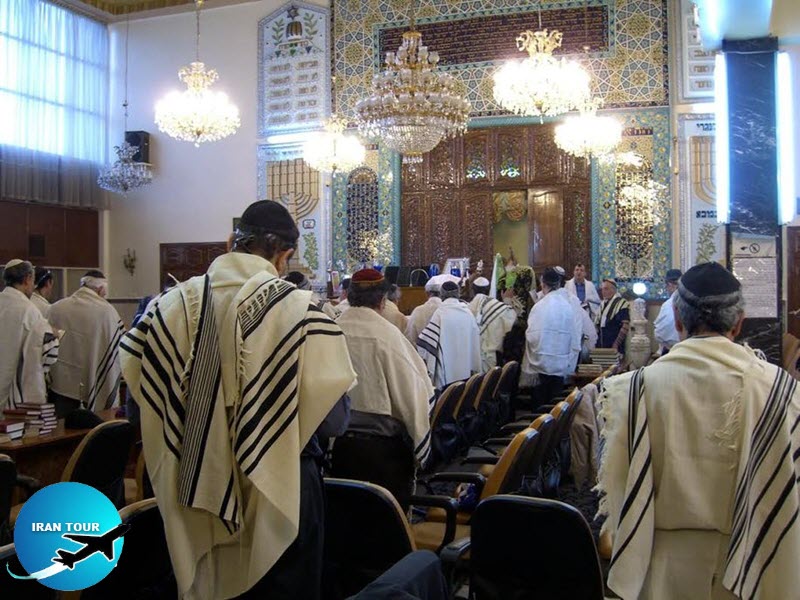The Jews and the Historical Background of their Residence in Esfahan
According to the chronicles of geographers and travelers of the 17th century, there existed initially two residential areas in Esfahan. One was Yahudieh, Jewish Quarter, and the other one was known as Jey or Shahrestaneh, Muslim Quarter. Yahudieh was about two times larger than Jey and its Jewish inhabitants migrated here since they could not tolerate anymore the endless cruelties of Nebuchadnezzar II, the Chaldean King of Babylon (Bokht ol Nasr) (605-562 B.C.).Therefore, they departed their homeland, Babylon in the east, and because of the similarities between the soil of Esfahan and their birthplace, selected this region for their residence. At the same time, Esfahan was a large trade center for the export of silk and cotton. Another narration is based on another date for their residence, which assumes that Esfahan was appointed for them to live upon the will of Shoushan Dokht, the Jewish wife of Yazd Gerd' I, king of the Sassanid Dynasty 399-420 A.D.
In 1954 A.D., during the renovation of the ceiling of a synagogue called, Jacob (Yaghub) in the old cemetery of Esfahani Jews, Estera Khatoon in 'Pir-eBakran', a village 25 kilometers west of Esfahan, a carved stone tablet discovered, 95 centimeters by 75 centimeters, contained some holy verses of the Old Testament. The inscribed date was precise, Thursday, 28th of the month of Water. 3890 Hebrew Year. According to the Hebraic calendar, the year 2003 A.D. falls on 5763 H. Y. and 1873 Years ago is indicative of the long history of the Jews in Esfahan.
 |
At present, the Jews of Esfahan have a population of 2500 persons. In Iran. their population is about 40,000 that in descending order are living in Tehran, Shiraz. Esfahan mostly in the Joubareh quarter and Hamedan. The Jewish community in Iran has one representative in the parliament. Joubareh is located between Kamal Ave, and Vali-e-Asre' Ave. and the existing synagogues mostly are not older than 100 years.
The plan of the prayer halls is usually square with a platform of 3 meters by 3 meters and 80 centimeters high, for a preacher in the middle and a central vault supported with four columns tied together by wooden beams at the level of the vault base. According to religious instructions since ancient times, the Jews used to design the basement of their houses so deep that they reached the level of the water table by moving a considerable amount of earth, typified by stairways leading to the water. It was considered a holy place, called Mighveh. The main function was for the obligatory ceremonial washings of ladies practiced in such a place. Over a long time, owing to its ideal thermal insulation against temperature fluctuations, it was also used as a suitable place for some public gatherings, resting, and preserving food, mostly decorated with tilework displaying Hebraic inscriptions of some holy verses.
After a long quest, finally, we could find two Mighvehs respectively in Keter Davoud, built-in 1944 A.D., and Gol Bahar synagogue. (see the photos). Let it remain unsaid that Gol Bahar Synagogues is one the oldest synagogues in Iran situated in the middle of an old quarter by the same name. Its Mighveh basically survives but is dry due to water table subsidence. The present building is the same as the level of the alley, built-in 5703. H.Y. Among its striking features is the existence of a stone tablet placed in the wall (45 centimeters by 25 centimeters) with stucco inscription in Hebrew that was recently translated into Persian, with 1235-year antiquity as follows: "The synagogue and Mighveh were built, went halves with people and Elyahoo, son of Levykhani and his wife provided that two Berakhatoora (some Verses of the Torah) should be recited weekly for the aforementioned couple instead of their offspring, may its spiritual reward (Misava) grant to them (4528 H.Y.)". It should be reminded that 2003 A.D. falls on 5763 in the Hebraic calendar.
In the following, there is a list of 17 existing synagogues in Esfahan.
1. Keter Davoud (David); Felestin (Palestine) Crossroad.
2.Gol Bahar, Harounieh St., Golbahar Lane.
3. Madressah; Harounieh St., Etihad high school (Halabian).
4. Mulla Nissan; Qiam Circle, after
Pir-e-Pinehdouze'.
5.Shah Golli; Joubareh, Latfar Lane.
6.Mulla Eliaho, Joubareh, Haj Soleyman Lane.
7.Shamouil; Joubareh, Qanadiha Lane.
8.Shokri, Joubareh, "Hammam-eSefid' Lane.
9.Khorshidi; Joubareh, 'Hammam-eSefid' Lane.
10. Mulla Yaghub, Joubareh, near the tomb of Kamal Esmail.
11.Jamaati, Joubareh, Latfar Lane.
12. Kaniseh-e-Bozorge', Latfar Lane.
13. Kaniseh-e-Mollarabi', Latfar Lane.
14. Mosheh; Joubareh, Mahi Foroush Lane.
15. Joseph Shamuil Shamoun, Mahi Foroush Lane.
16. Agha Davoud (David); Joubareh, across from Kamal Esmail tomb.
17.Sange Bast; Joubareh, Sangebast Lane.
